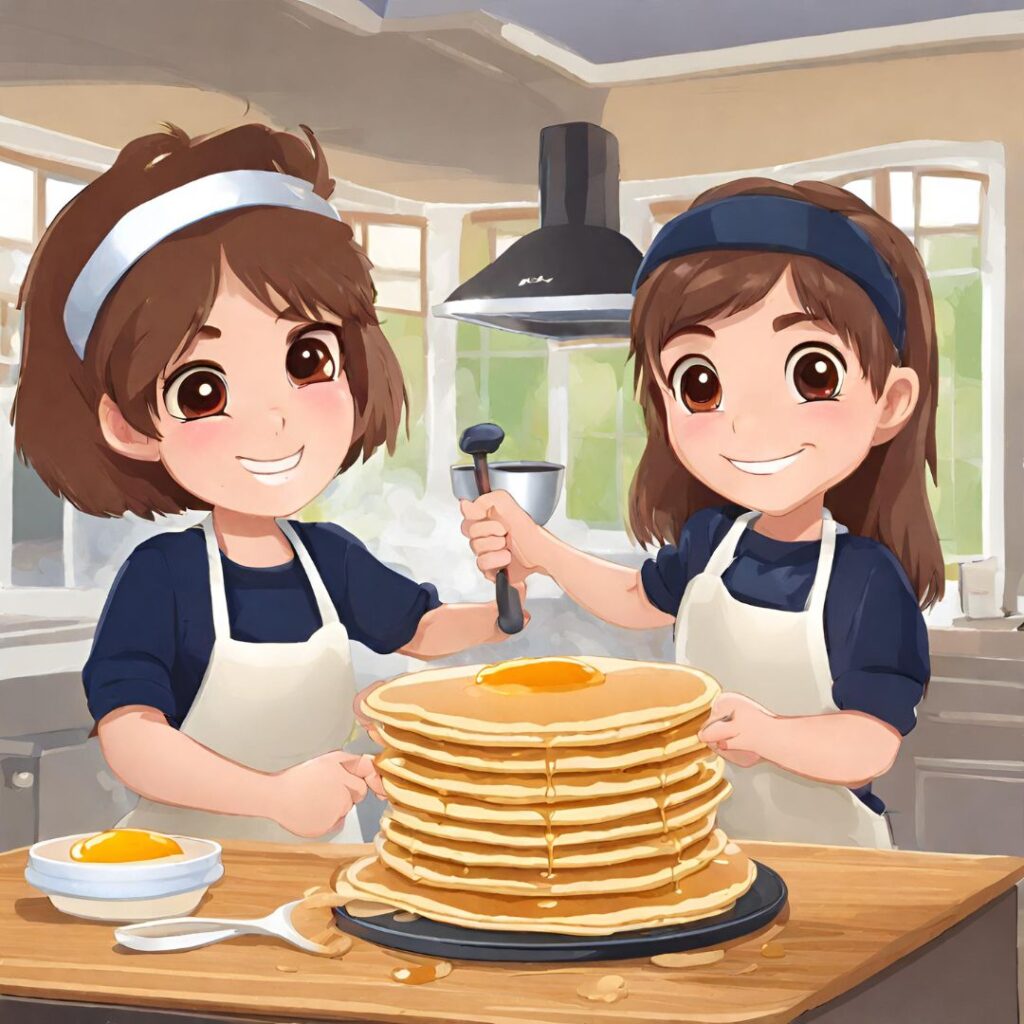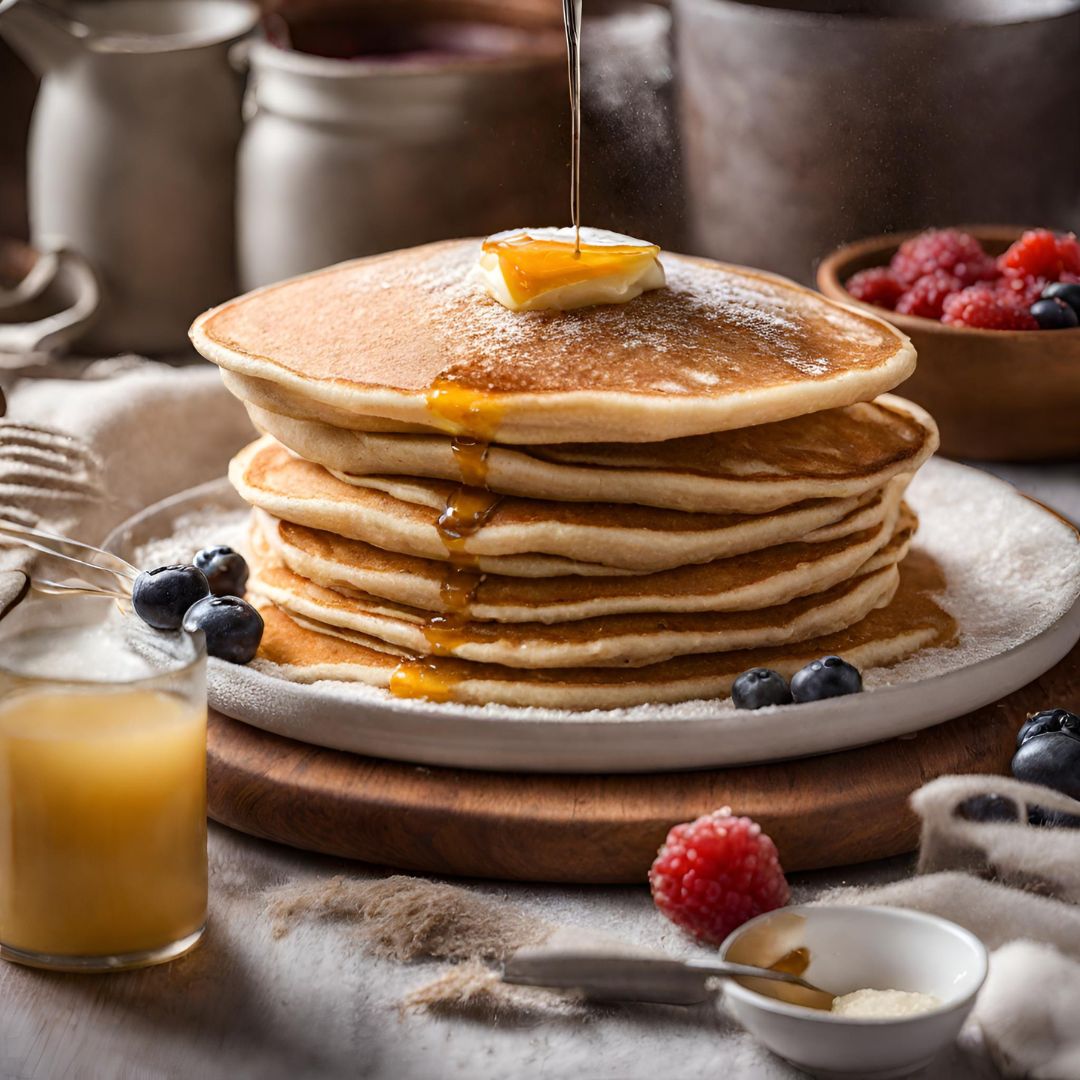Pancakes are a timeless breakfast staple, enjoyed by people of all ages. While the classic recipe calls for all-purpose flour, there’s a whole world of delicious alternatives waiting to be explored. From nutty whole wheat to fluffy gluten-free blends, the perfect flour can elevate your pancake game to new heights.
All-Purpose Flour Pancakes: The Familiar Favorite
All-purpose flour is the go-to choice for many pancake enthusiasts. It offers a balance of structure and tenderness, resulting in fluffy pancakes with a familiar texture. However, all-purpose flour can sometimes lead to dense or tough pancakes, depending on the recipe and mixing technique.
Bread Flour Pancakes: The Rise of the Yeast Champion
Bread flour boasts a higher protein content than all-purpose flour, resulting in chewier, denser pancakes. This makes them a great option for those who enjoy a heartier breakfast or want pancakes that can hold up to thicker toppings. However, bread flour pancakes can be prone to dryness if not prepared correctly.
Tips for Successful Pancake Making

Whether you’re using all-purpose or bread flour, mastering the art of pancake making takes practice and a few key tips:
- Measure accurately: Too much flour can lead to dense pancakes, while too little will result in runny batter.
- Don’t overmix: Overmixing activates the gluten in the flour, making the pancakes tough. Mix just until the dry ingredients are incorporated.
- Let the batter rest: This allows the gluten to relax, resulting in lighter and fluffier pancakes.
- Use the right amount of heat: A medium-low heat is ideal for cooking pancakes. This ensures they cook evenly without burning.
- Flip with confidence: Once bubbles start appearing on the surface of the pancake and the edges begin to set, it’s time to flip.
Experimenting with the Best Flour for Pancakes
The best flour for pancakes ultimately depends on your personal preferences and dietary needs. Here are some exciting alternatives to explore:
- Whole wheat flour: Adds a nutty flavor and extra fiber. Use a combination of whole wheat and all-purpose flour for a balanced texture.
- Gluten-free flour blends: Perfect for those with gluten sensitivities. Look for blends containing xanthan gum, which helps bind the ingredients.
- Almond flour: Adds a rich, almondy flavor and is naturally low in carbohydrates. Use a combination of almond and coconut flours for optimal results.
- Oat flour: Provides a subtle oat flavor and a slightly denser texture. This is a good option for those looking for a more wholesome pancake.
Key Considerations for Using Bread Flour in Pancakes
While bread flour can offer a unique texture to your pancakes, it’s important to keep a few things in mind:
- Use less bread flour than all-purpose flour: Due to its higher protein content, a smaller amount of bread flour is needed to achieve the desired consistency.
- Add a leavening agent: The extra protein in bread flour can hinder rising. Adding a leavening agent like baking powder or baking soda helps ensure fluffy pancakes.
- Adjust the liquid ratio: Bread flour absorbs more liquid than all-purpose flour. Increase the amount of milk or water in your recipe accordingly.
- Expect a chewier texture: Bread flour pancakes will have a denser, chewier texture compared to their all-purpose flour counterparts.
Bread Flour vs. All-Purpose Flour: Choosing the Right One
Ultimately, the choice between bread flour and all-purpose flour comes down to personal preference. If you enjoy thick, chewy pancakes, bread flour is a great option. But if you prefer light and fluffy pancakes, stick to all-purpose flour.
Proven Tips for Perfect Pancakes

Whether you’re a seasoned pancake pro or a curious beginner, these proven tips will help you achieve pancake perfection every time:
- Use fresh ingredients for optimal flavor and texture.
- Sift the dry ingredients to ensure even distribution and prevent lumps.
- Let the batter rest for at least 15 minutes before cooking. This allows the gluten to relax and the flavors to develop.
- Use a non-stick pan or griddle to prevent sticking.
- Preheat your pan to medium-low heat before adding the batter.
- Add your favorite toppings like fresh fruit, whipped cream, or maple syrup.
Final Thoughts on Bread Flour Pancakes
Bread flour can be a wonderful addition to your pancake repertoire, offering a unique texture and chewy bite. With the right technique and a little experimentation, you’ll be whipping up delicious bread flour pancakes in no time.
Read Also:
FAQs
Can I use cake flour for pancakes?
While cake flour can be used for pancakes, it will result in a very delicate and thin pancake. You may need to increase the amount of flour or add a binder like xanthan gum to achieve a desirable consistency.
What are some other alternative flours I can use for pancakes?
The possibilities are endless when it comes to alternative flours for pancakes. Here are a few more options to explore:
- Coconut flour: A great option for those who follow a keto or paleo diet. Coconut flour has a high fiber content and absorbs a lot of liquid, so you’ll need to adjust the recipe accordingly.
- Sprouted grain flour: Offers a readily digestible and nutritious alternative to traditional flours. Sprouted grain flour is made from grains that have been allowed to germinate, which increases their nutrient content.
- Buckwheat flour: A gluten-free flour with a slightly nutty flavor. Buckwheat flour is a good source of protein and fiber.
- Chickpea flour: Also known as gram flour, chickpea flour is a naturally gluten-free and high-protein flour. It adds a slightly earthy flavor to pancakes.
What are some tips for storing pancakes?
Pancakes can be stored in an airtight container in the refrigerator for up to 3 days. Reheat them gently in a pan or microwave until warmed through.
Can I freeze pancakes?
Yes, you can freeze pancakes! Let them cool completely, then stack them with parchment paper between each layer. Place the stack in a freezer-safe bag and freeze for up to 3 months. Thaw overnight in the refrigerator or reheat directly from frozen in a pan or microwave.
What are some delicious toppings for pancakes?
The possibilities are endless when it comes to pancake toppings! Here are a few ideas to get you started:
- Fresh fruit: Berries, bananas, sliced apples, or peaches are all great options.
- Whipped cream: A classic topping that adds a touch of sweetness and richness.
- Maple syrup: The quintessential pancake topping. Choose pure maple syrup for the best flavor.
- Chocolate sauce: A decadent treat for the chocolate lovers.
- Nuts and seeds: A crunchy and healthy addition to your pancakes. Try chopped walnuts, pecans, almonds, or pumpkin seeds.
- Nut butters: Peanut butter, almond butter, or cashew butter add a protein and flavor boost to your pancakes.
- Spices: A sprinkle of cinnamon, nutmeg, or cardamom can add a warm and inviting flavor to your pancakes.
I hope this article has helped you explore the world of alternative flours for pancakes. With a little experimentation, you’re sure to find the perfect flour for your delicious and fluffy pancake creations!

